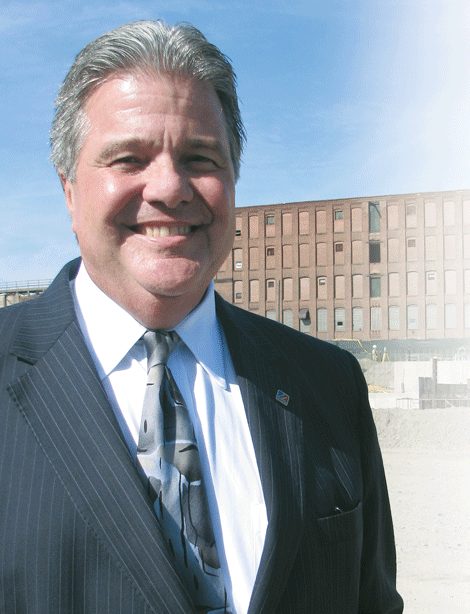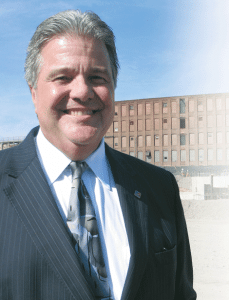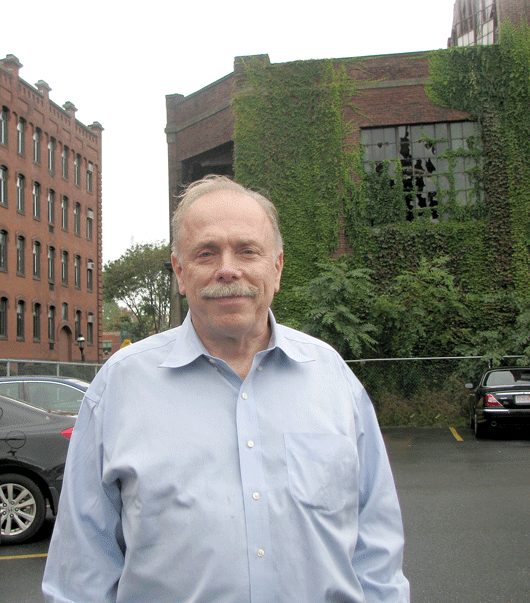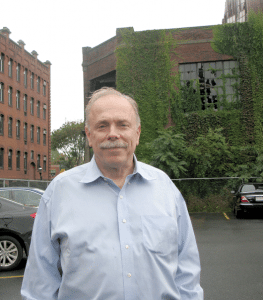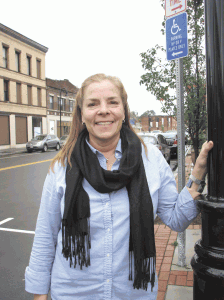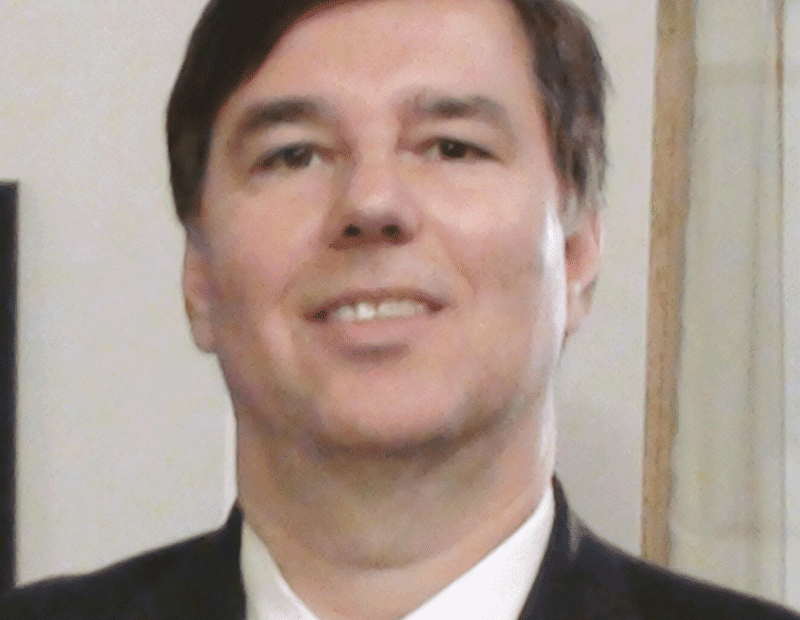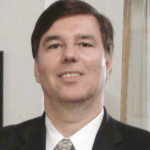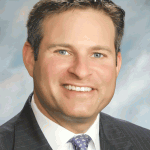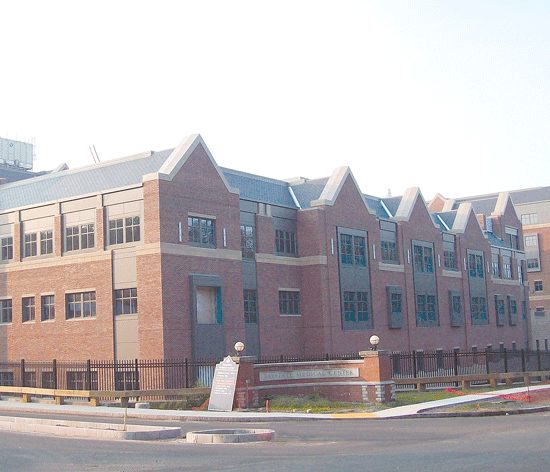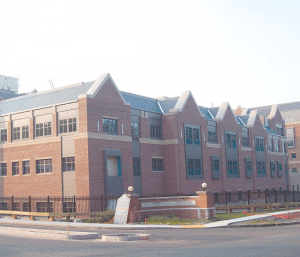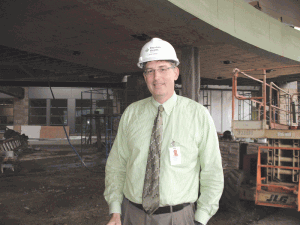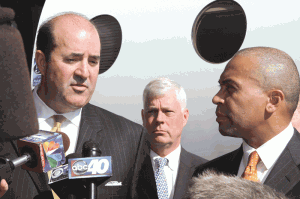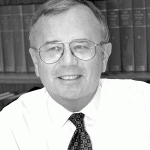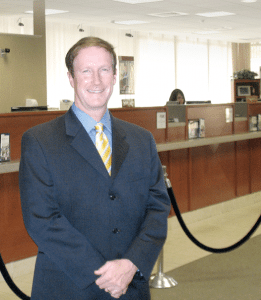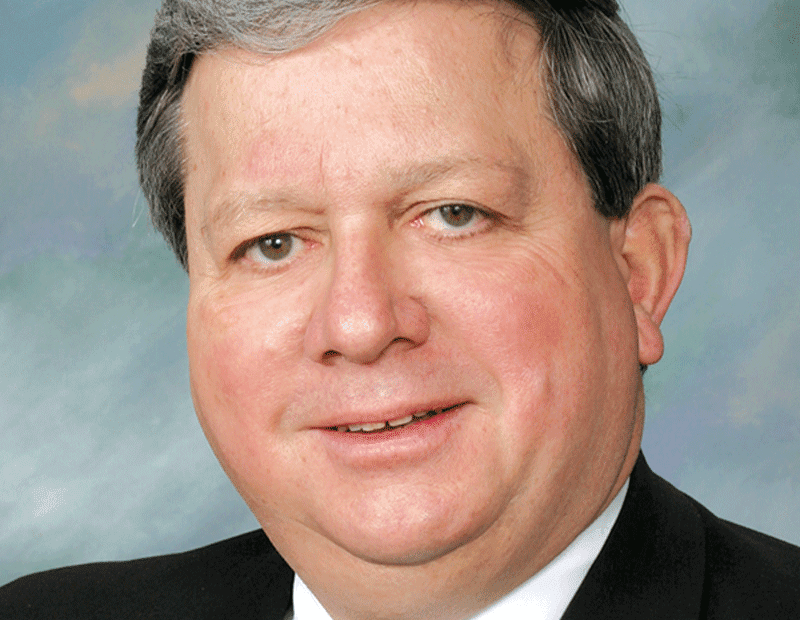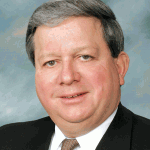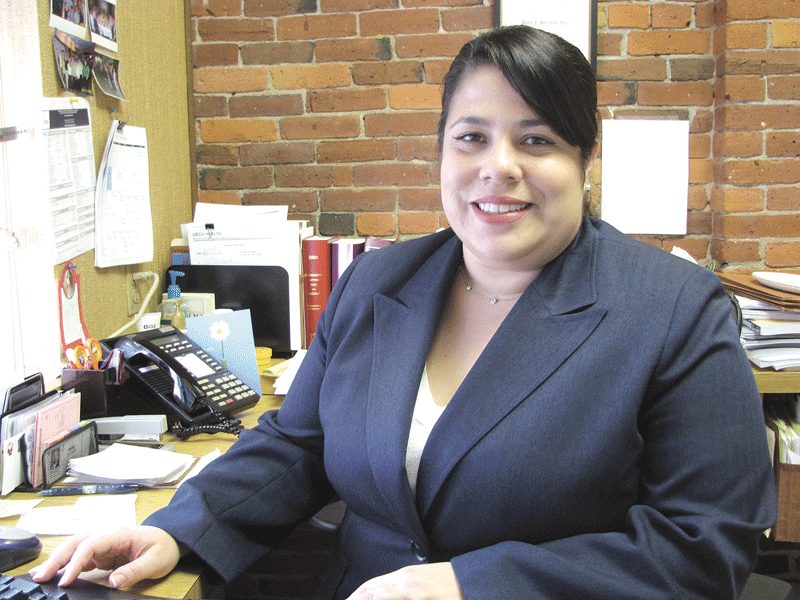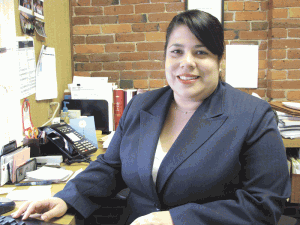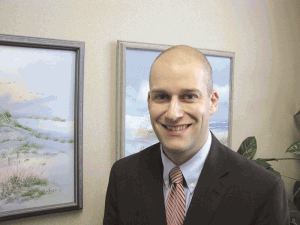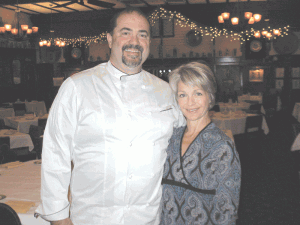New UMass President Says That’s a Big Part of His Job Description
“On the Road Together.” That’s the name new UMass President Robert Caret and his staff gave to a four-day, 400-mile bus tour he took of the state and the university’s five campuses. It was called that to drive home the point that the state and university must travel together if they intend to get where they both want to go, said Caret. He emphasized repeatedly in an interview with BusinessWest that more support from the Commonwealth is needed to reverse an alarming trend that has seen the public institution increasingly take the look and feel of a private university, with possible limits on access.Robert Caret said he was repeating a joke, and while his comments drew many laughs, overall, he finds little humor in what he was saying.
He was talking with business leaders in Greater Springfield about the medical school in Worcester, how it carries the name UMass in front of those two words, and wondering, sort of, why that’s the case.
“The medical school’s budget is almost $1 billion, and only 4% is state-supported,” Caret, the recently installed president of the five-campus University of Massachusetts, told his audience over breakfast at the Springfield Sheraton. “I joked to the governor’s team that I could get more than 4% if I sold the name to Gillette or EMC or Peter Pan. Why do we have Massachusetts on the label if Massachusetts isn’t paying for it?”
Obtaining better support from the Commonwealth is just one of the many goals and aspirations Caret brings with him to his office in Boston as he takes the helm at a public institution ranked as the 19th-best university in the world in the Times of London 2011 World Reputation Rankings, but one that has historically received much less respect (in the form of funding) from the state in which it plays such a key role in economic development and job creation — $5 billion annually, by his estimates.
Overall, only 23% of the roughly $2.6 billion for the system comes from the state, he went on, adding that options for the rest are few, with tuition being the primary source. And as tuition rises, which it has steadily over the past few decades, public schools must devote more resources to student aid, said Caret, while also contributing more to new capital projects and relying more on endowments to meet the bottom line.
“We’re becoming a private institution,” he explained, adding a pause for effect. “That’s the model of a private university — high tuition, high aid, build your own buildings, raise your own money, 70% of your revenue comes from tuition. That’s a private university, and that’s where we’re all going.
“And the problem if we all go private is we’ll all provide high quality,” he continued, “but a lot of people aren’t going to get in, because you can’t run a 70,000-student enterprise using that model. You can run Smith, Mount Holyoke, and Amherst using that model, but not a school this large.”
Efforts to change that equation and improve such numbers are part of a complex job description that Caret attempted to simplify down to a few overriding tasks, with “telling and selling” being perhaps the most important. “That’s a big part of what I do,” he explained. “It’s all about getting out and telling the story.”
He would add another action verb to that list — listening, which he says is an important attribute and a big part of the process of making the university more of the force that economic-development officials statewide, and especially in the regions near the five campuses, want and need it to be.
Caret did copious amounts of telling, selling, and listening on a recent four-day, 400-mile bus tour of the state that took him from Adams to Buzzards Bay. Called “On the Road Together,” so-named to drive home the point that the state and university must travel together if they intend to get where they both want to go, the bus tour made stops locally in Pittsfield, downtown Springfield, the Smith & Wesson facility on Roosevelt Avenue, the high-performance computing center and intermodal transportation center, both in Holyoke, and the Engineering Research Center for Collaborative Adaptive Sensing of the Atmosphere (CASA) on the Amherst campus.
BusinessWest rode on the bus for several legs of the junket, seizing an opportunity to talk with Caret about this latest stop on a 30-year career in higher education (all of it spent in the public arena), his vision for the university, and the strategic plan he’s creating to better tell the university’s story and drive home his points about the ominous trends unfolding.
“We need society to understand that they’re closing the doors to education,” he said. “If government doesn’t step up, we’ll continue to build quality, but as we build quality, we’ll become more privatized, and as we become more privatized, access becomes the thing that suffers, and we just don’t want that to happen.”
Back to His Routes
Caret calls it the “Rodney Dangerfield effect.”
That’s the phrase he summoned to describe the situations he’s found himself in at the three stops on his résumé, including the latest.
Elaborating, he said that, at Towson University in Maryland, which he served in many capacities and lastly as president for eight years, the school operated in the very large shadow of Johns Hopkins University, just 20 miles away. And at San Jose State University in California, which he served as president from 1995 to 2003, Stanford was just down the road.
In Massachusetts, Harvard is the iconic private institution, but there are more than a dozen other major private colleges vying for students, media coverage, research money, and the attention of the public.
At Towson and San Jose, Caret said he learned early on that the best strategy wasn’t to try to compete with those institutions, but to complement them. And he intends to take the same approach in the Bay State.
“We want to be in a state of complementation; society needs public, private, two-year, four-year, state universities, community colleges, and universities to handle all its economic and social needs,” he explained. “What we all need to do is decide what piece we do, and how we can do it with high quality.
“And if you look at schools like Johns Hopkins, Stanford, Harvard, and MIT, only about 20% or less of their graduates stay in the state in which those schools reside, because they’re playing largely to an international audience; they take people from all over the world, and they go back all over the world,” he continued. “The University of Massachusetts takes 80% of its students from the state of Massachusetts and 80% of them stay here; we graduate 13,000 or 14,000 new citizens a year who go into the workforce and pay taxes. And all those campuses I’ve been involved with … you may get more startups out of Hopkins, MIT, and Stanford, but 20 years from now, UMass graduates are going to be running those companies because we’re going to permeate the ranks of those companies.”
Beyond these complementation efforts, Claret presided over periods of significant growth at both of his previous stops, career-wise, and gained national acclaim for eliminating race-based graduation disparity at Towson.
Indeed, under his leadership, the six-year graduation rate for all Towson students rose from 60% in 2003 to 75% in 2010. What’s more, the six-year graduation rate for African-American students rose from 48% in 2003 to 76% in 2010.
Caret wasn’t necessarily looking for a new job — although he’s always been receptive to new challenges — when UMass commenced its search for a successor to Jack Wilson last fall. He said he was lured by the opportunity to lead a system, and especially one with a strong research component, something he hadn’t experienced previously. Meanwhile, Boston was also an attraction; he did his undergraduate work there and grew up in New England.
Road Map for Progress
Starting back in the interviewing process, Caret said he’s been doing a lot of “reading, Googling, and learning” about the university, its five campuses — Amherst, Worcester, Boston, Lowell, and Dartmouth — and specific initiatives at those campuses and the communities that surround them. That process has only accelerated since he was hired in July.
“I was given three briefing books on an iPad that were probably a total of 450 pages of briefings on every piece of the UMass system — from campuses to budgets to the high-performance computing center, the stem-cell bank, everything we were doing,” he said. After he was hired, he complemented this reading and learning with roundtable meetings on the various campuses with faculty senates, unions, vice chancellors, deans, student groups, and other constituencies.
The bus trip, which included 24 stops, was, in many ways, a continuation of those research efforts, while also serving as a vehicle — literally and figuratively — for doing more of that telling and selling.
At Smith & Wesson, for example, he learned not only about that company’s expansion initiative and the adding of more than 200 jobs, but also about the many challenges facing area manufacturers — recruitment of talent topping the list — and the university’s efforts to address them while also spurring innovation.
In Holyoke, he spent time with city leaders at the high-performance computing center — a prime example of the university partnering with both private colleges (MIT and Boston University) and the business community — and also learned of that community’s efforts to create an Innovation District and use public transportation to help achieve growth.
Other stops on the tour included the Emerging Energy Technology & Innovation Center at UMass Lowell, a biomanufacturing facility in Fall River, Venture Development Center at UMass Boston, and the medical school itself.
What has he learned?
“There are a lot of similarities in what people are looking for from UMass,” he explained, referring to just the first few legs of his trip in Western Mass. “In North Adams, Pittsfield, Lee, and Springfield, they want more help with economic development, especially with technology transfer; if they have startup companies, they want a workforce to continue to feed those ventures, especially in the new technologies areas like biotech, life sciences, IT, and clean energy. But the further you are away from the main campuses, the harder it is to maintain those relationships.
“The other piece we see is the educational piece itself, which also feeds into workforce,” he continued. “But it also feeds into advanced manufacturing. And the third one is basic quality of life; Springfield, for example, would like to have much more of a cultural linkage with Amherst, and have more of the kinds of things that happen on the campus — like plays and other kinds of performances — in Springfield.”
Moving in the Right Direction
At most of the stops on the tour there was at least one meeting with the local business community, which Caret described as one of the constituencies with which the university must build relationships — and draw support.
Indeed, as he wrapped up his remarks at the Springfield Sheraton, Caret asked those assembled for advocacy in several different forms.
“We’d like some financial advocacy,” he said, meaning monetary support. “But we also need political advocacy, which can be almost as important as financial advocacy. And we’d also like a little emotional advocacy; every once in while, give us a pat on the back or a hug — we’d like to feel good every day about what we’re doing.”
When asked to elaborate on what he wants to accomplish at UMass, Caret listed several of the things he’s achieved at Towson and San Jose State, everything from higher graduation rates to stronger partnerships with business, other colleges (public and private), and the state itself. He also listed stronger linkages between the individual campuses, the regions surrounding them, and individual cities.
Which brought the conversation to the link between the flagship campus in Amherst and Springfield, and efforts in recent years to bolster that relationship and leverage the university’s many assets in a city trying to revitalize and reinvent itself.
“I will be a strong advocate for all of our campuses being aggressive with their local regions — but then you have to define ‘region,’ which becomes more complex,” he explained. “But I do think Amherst and Springfield are a logical pairing.
“If you look at studies from the Brookings Institute and other groups, you’ll find that, in most instances, for a vibrant city, you need a university at the core of its economic focus,” he continued. “And we want to play that role.”
And when asked how he would measure his success rate with his many goals, he again referenced his previous stops and said, “when I’m done here, I want to be able to say the same things I’ve said at the other two campuses.”
Elaborating, he said that, at both Towson and San Jose State, he presided over a number of capital projects that changed the faces of both schools. “I’ve probably done $2 billion worth of infrastructure at the two schools, and more than $1 billion at the last one (Towson), and they hadn’t had a new building in 30 years; it was a transformational change.”
But he is more proud of his success with improving the image of both schools, both in their respective regions and globally.
“At both schools, I raised the image of the campus, I raised the sense of pride among the people working there and graduating from there, and got the world excited about those campuses again; these were schools that were among the best of their breed, but they just weren’t getting the recognition they deserved.
“The biggest thing I’ve done is to revitalize a school, make people feel good about it, and energize the campus,” he continued. “And I’d like to say that about UMass, because if I can do that, then all those other things will happen; the rankings will improve, the funding will improve, the political advocacy will improve, and all the rest will happen.”
Next Stop?
There is no simple strategy for energizing a campus, he told BusinessWest as the bus was pulling into downtown Holyoke for its next stop. But a big part of that equation is that ‘telling-and-selling’ component of his job description.
But it’s also the next step in that process — delivering.
“After the telling and selling, you come back and you produce something and you get people excited,” he said. “You do put your money where your mouth is.”
That’s something both the university and state need to do, adding that sometime soon he’d like to be able to stop making jokes — if that’s what they are — about selling the name on the medical school in Worcester.
George O’Brien can be reached at [email protected]



